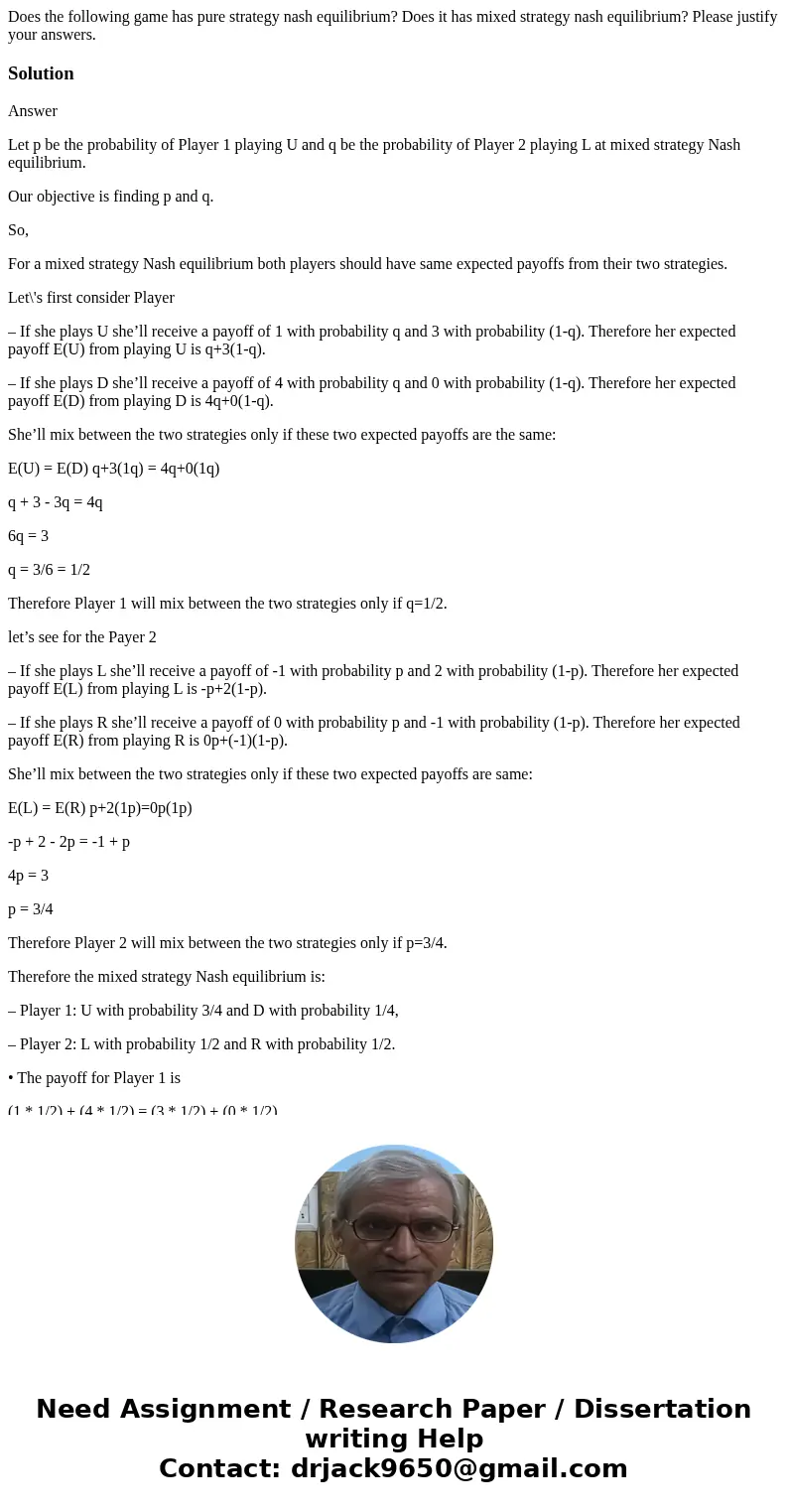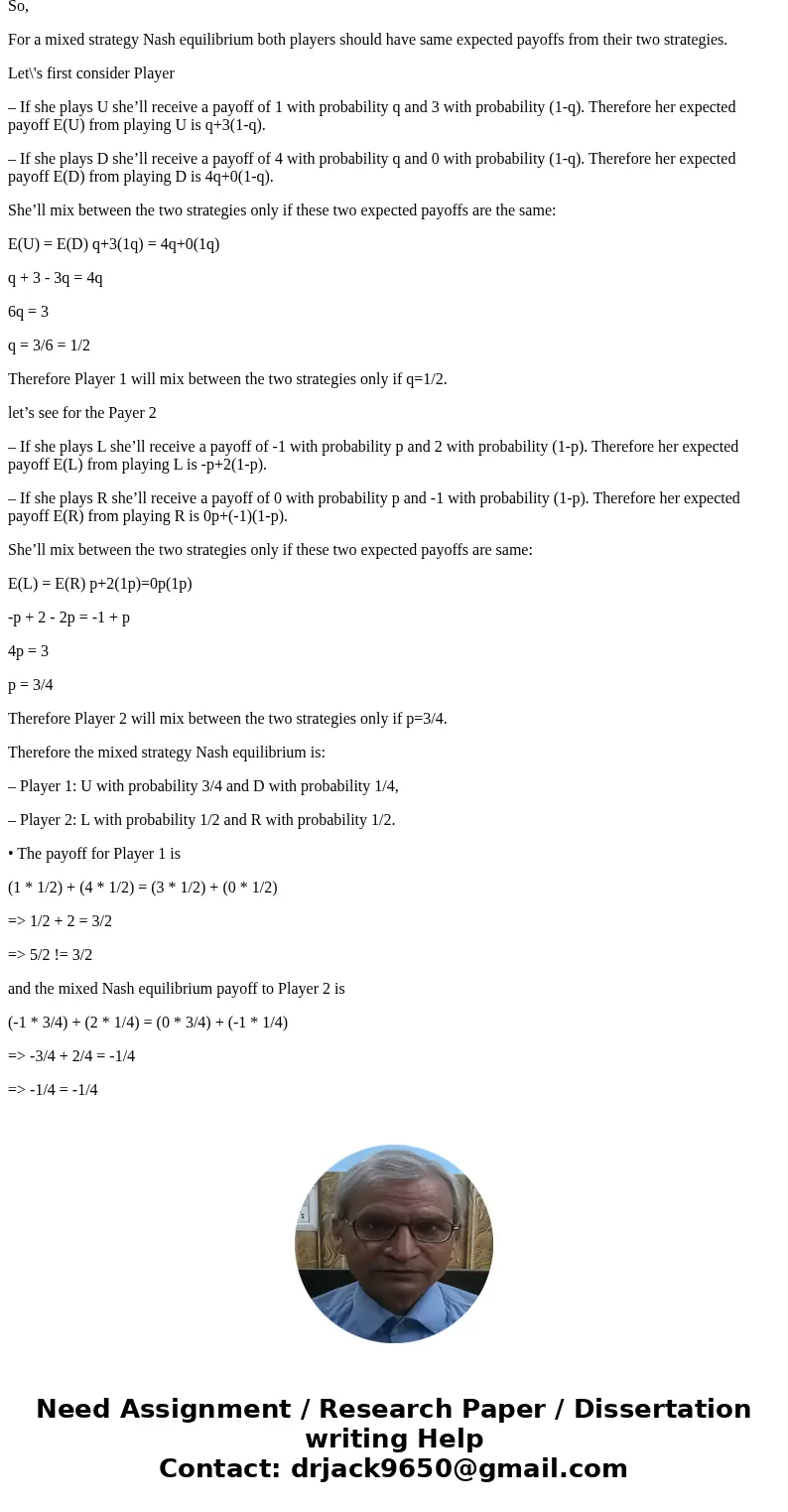Does the following game has pure strategy nash equilibrium D
Solution
Answer
Let p be the probability of Player 1 playing U and q be the probability of Player 2 playing L at mixed strategy Nash equilibrium.
Our objective is finding p and q.
So,
For a mixed strategy Nash equilibrium both players should have same expected payoffs from their two strategies.
Let\'s first consider Player
– If she plays U she’ll receive a payoff of 1 with probability q and 3 with probability (1-q). Therefore her expected payoff E(U) from playing U is q+3(1-q).
– If she plays D she’ll receive a payoff of 4 with probability q and 0 with probability (1-q). Therefore her expected payoff E(D) from playing D is 4q+0(1-q).
She’ll mix between the two strategies only if these two expected payoffs are the same:
E(U) = E(D) q+3(1q) = 4q+0(1q)
q + 3 - 3q = 4q
6q = 3
q = 3/6 = 1/2
Therefore Player 1 will mix between the two strategies only if q=1/2.
let’s see for the Payer 2
– If she plays L she’ll receive a payoff of -1 with probability p and 2 with probability (1-p). Therefore her expected payoff E(L) from playing L is -p+2(1-p).
– If she plays R she’ll receive a payoff of 0 with probability p and -1 with probability (1-p). Therefore her expected payoff E(R) from playing R is 0p+(-1)(1-p).
She’ll mix between the two strategies only if these two expected payoffs are same:
E(L) = E(R) p+2(1p)=0p(1p)
-p + 2 - 2p = -1 + p
4p = 3
p = 3/4
Therefore Player 2 will mix between the two strategies only if p=3/4.
Therefore the mixed strategy Nash equilibrium is:
– Player 1: U with probability 3/4 and D with probability 1/4,
– Player 2: L with probability 1/2 and R with probability 1/2.
• The payoff for Player 1 is
(1 * 1/2) + (4 * 1/2) = (3 * 1/2) + (0 * 1/2)
=> 1/2 + 2 = 3/2
=> 5/2 != 3/2
and the mixed Nash equilibrium payoff to Player 2 is
(-1 * 3/4) + (2 * 1/4) = (0 * 3/4) + (-1 * 1/4)
=> -3/4 + 2/4 = -1/4
=> -1/4 = -1/4


 Homework Sourse
Homework Sourse